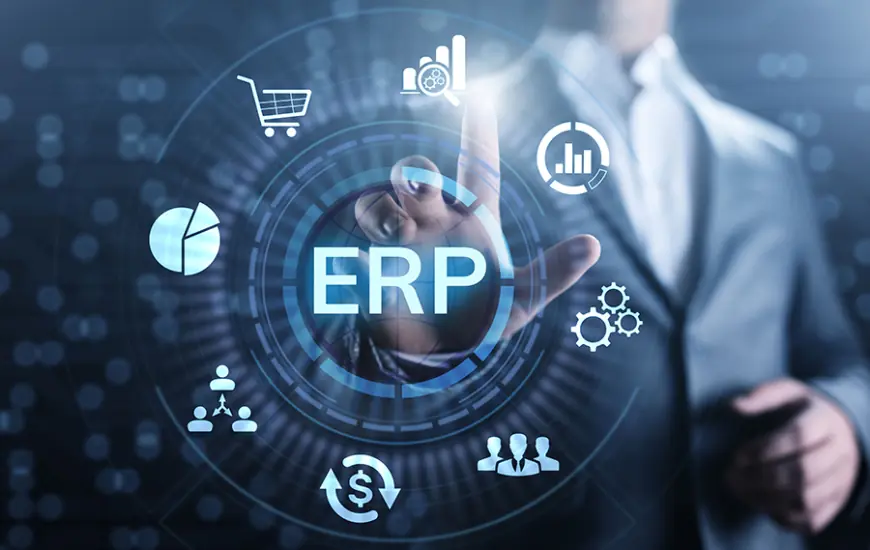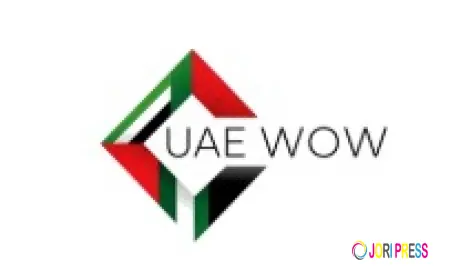Singapore ERP Software Market 2029 Size, Share & Trends – Comprehensive Industry Report

Industry Key Highlights
In 2023, Singapore’s Enterprise Resource Planning (ERP) software market was appraised at USD 481.29 million, and is projected to reach USD 910.77 million by 2029—registering a robust Compound Annual Growth Rate (CAGR) of 11.05% across the forecast period (2019–2029) according to TechSci Research. This growth standard places the market firmly on a trajectory of sustained expansion, supported by a confluence of structural, regulatory, technological, and economic factors.
Key takeaways include:
-
Strong CAGR of 11.05% from 2023 to 2029
-
Growing adoption across enterprise segments
-
On‑premises ERP maintains dominance owing to customized integration and data control
-
SMEs gain momentum through government incentives
-
East Region emerges as a growth hotspot, especially among industrial and logistics players
Browse over XX market data Figures spread through XX Pages and an in-depth TOC on the "Singapore ERP Software Market"@https://www.techsciresearch.com/report/singapore-erp-software-market/21960.html
Singapore’s Digital Imperative & Government Initiatives
Smart Nation Vision
Since its launch in 2014, the Smart Nation initiative has been the architect of Singapore’s digital makeover. Aimed at creating a seamlessly interconnected ecosystem through IoT, data analytics, and Smart Government services, the initiative vigorously promotes digital infrastructure adoption—including ERP platforms—through targeted funding and awareness programs.
Regulatory Compliance as a Growth Catalyst
Strict compliance standards prevail across Singapore’s finance, healthcare, manufacturing, and public sectors. ERP systems provide a unified backbone—integrating audit trails, reporting, and secure data protocols—to help companies adhere to evolving requirements. This regulatory pressure galvanizes continuous ERP adoption and upgrades.
SME Incentives & Financial Support
Singapore’s SME sector benefits from targeted grants, tax rebates, and subsidized consultancy, reducing barriers to ERP adoption. As a result, vendors tailor cost-effective, SME-oriented packages—with modular deployments and phased implementation—to edge into this expanding market front.
Deployment Preferences: On‑Premises vs. Cloud
On-Premises: The Reigning Champion
In 2023, on‑premises ERP constituted the majority of software deployments for several compelling reasons:
-
Customization Superiority
Companies with niche workflows—particularly in manufacturing, healthcare, and finance—favor industry‑tailored customizations. On‑premises solutions enable precise tailoring to organizational processes, ensuring seamless data mapping, UI workflows, and permission hierarchies. -
Integration with Legacy Infrastructure
For businesses with entrenched IT architectures—mainframes, old databases, bespoke apps—on‑premises ERP allows direct interface without rip‑and‑replace overheads, minimizing disruption. -
Data Security & Regulatory Assurance
In industries handling sensitive data (e.g., financial services, life sciences, healthcare), the appeal of direct hardware control, encrypted enclaves, and strict internal governance remains strong and persists despite cloud advances.
However, cloud‑based ERP is gaining traction, particularly as organizations prioritize cost elasticity, remote accessibility, and rapid deployment. Hybrid strategies—combining public/private cloud with on‑premises components—are increasingly common to balance flexibility and control.
Regional Market Adoption: Focus on East Region
Industrial & Logistics Powerhouse
Singapore’s East Region—home to key industrial clusters, logistics zones, and the aviation gateway at Changi—has seen rigorous ERP adoption. Manufacturers, shipping lines, logistics providers, and aviation support services are investing in systems capable of managing inventory, channel coordination, asset health, and regulatory documentation.
SME Cluster Dynamics
The East hosts a growing number of SMEs in light manufacturing, food processing, packaging, e‑commerce, and warehousing. Two drivers are central:
-
Digitalization grants aimed at lifting smaller players
-
ERP as productivity lever to compete on supply chain excellence
This ecosystem has created a regional ERP boom, prompting vendors to localize solutions and services—such as deployment assistance, training, and ongoing maintenance—to meet East Region demand.
Emerging Trends
1. Intelligent ERP & AI-Driven Modules
Modern ERP systems now embed AI agents for intelligent automation: predictive demand planning, anomaly detection, anomaly-based compliance and cybersecurity alerts, and chatbots for support and training. Singaporean businesses are increasingly piloting AI-powered dashboards for real-time financial forecasting, inventory optimization, and maintenance scheduling.
2. Modular & Microservices Architectures
Rather than full-suite ERP, organizations are adopting modules (e.g., financials, procurement, HR) through microservices architectures. This supports rapid deployment, easier upgrades, and selective investment, particularly among SMEs testing digital waters before scaling.
3. Vertical-Specific Cloud Offerings
Vertical cloud ERP—systems tailored to sectors like F&B, pharmaceuticals, aviation, or retail—are gaining traction. These offer pre‑built compliance modules, standardised workflows, and sector-specific analytics, accelerating implementation cycles.
4. Edge Computing & On‑Prem-Supported Hybrid Models
For highly sensitive or real-time use cases (e.g., on-site manufacturing lines, biomedical labs), hybrid architectures with edge processing backed by on‑premises ERP are emerging. This ensures data stays local for processing, with strategic synchronization to the cloud for backup and analytics.
5. API Economy & Interconnected Ecosystems
ERP vendors now lead within wider software ecosystems—CRM, HRIS, WMS, TMS—through robust APIs and integration marketplaces. This modular interoperability enables holistic analytics and cross-functional workflows, driving more compelling business cases for adoption.
6. Subscription-Based & Consumption Models
Cloud ERP providers are injecting flexible pricing models: pay-per-user, usage-based billing, or seasonally optimized plans—critical for SMEs seeking capital efficiency. This shift is reducing upfront investment hurdles and improving vendor-specific adoption.
Drivers Fueling Growth
1. Rising Demand for Operational Efficiency
As supply chains grow in complexity and cost pressures intensify, ERP systems offer real-time operations visibility, enabling fast decision-making and resource optimization.
2. Sectoral Digital Transformation
Highly regulated sectors—BFSI, healthcare, government—require a unified, secure, and compliant data backbone. ERP platforms are becoming central to digital transformation journeys.
3. Governmental Support & Ambitious Policies
Strategic budget allocation—through SFA, EDB, inov‑ate!—lowers the barrier for digital transformation, especially for smaller firms who previously couldn’t justify ERP investments.
4. Talent & Productivity Gaps
As Singapore contends with labor shortages and skills mismatches, ERP systems automate manual workflows and enhance workforce productivity, enabling employees to focus on high-value activities.
5. Emergence of Data-Centric Business Models
With analytics platforms becoming integral, ERP systems feed rich and structured data into BI tools, AI models, and dashboards—strengthening predictive abilities and strategic planning.
Market Dynamics & Competition
-
Global Behemoths vs. Local Masters
SAP, Oracle, Microsoft fend off competition with scale, deep customization, and AI-driven extensions. However, SAP’s barrier to entry for smaller firms and tailored complexity gives local and niche vendors’ entry opportunities. -
SME-Focused Competitors
Sage, Acumatica, and Workday are steadily attracting SMEs with flexible, modular offerings and transparent cost structures—better suited to phased, budget-conscious digital migrations. -
Co-innovation & Partner Ecosystems
Many vendors align with local SI firms, consultancies, and accredited partners to deliver implementation and managed services—crucial for local market acceptance. -
Customer Loyalty & Switching Frictions
Large enterprises remain locked into existing systems (e.g., SAP ECC, Oracle EBS), leading to multi-year strategy cycles that tend toward “lift and shift” rather than rip-and-replace. -
Emerging Niche Entrants
Newer solutions focused on manufacturing (Epicor), logistics (Ramco), and sector-specific operational needs offer competitive differentiation within growing segments. These players are gradually carving out defensible niches.
10 Benefits of the Research Report
-
Strategic CAGR Verticals—Quantifies growth across deployment models, verticals, and regional clusters
-
Government Policy Insights—Details programmatic levers backing SME subsidies
-
Competitive Benchmarking—Lists major ERP vendors, their positioning, strengths, and growth strategies
-
Deployment Trend Mapping—Shows the ongoing significance of on-premises systems
-
Segment-Specific Data—Breakdown by enterprise size (SME, mid-market, large) and sector (BFSI, healthcare, manufacturing)
-
Regional Growth Insights—Highlights dominance and potential within the East Region
-
Trend Spotlight—Covers AI, modular ERP, cloud hybrids, and edge‑influenced offerings
-
Executive Quotes—Gleaned from authoritative voices like TechSci’s Research Director
-
TOC & Exhibit-Rich Overview—XX pages of tables/charts allow for quick thematic navigation
-
Actionable Recommendations—Built to inform enterprise buyers, ERP vendors, and investors on top-of-mind opportunities through 2029
Future Outlook
1. Cloud Outperforms On‑Premises Post‑2025
By 2025–2026, cloud deployments are expected to cross the 50% threshold, driven by agile SMEs and rapid migration tools. Beyond 2025, hybrid models will dominate, and new AI-enabled modules—available only via cloud—will widen the adoption gap.
2. Vertical Cloud ERP Gains Surge
Industrial, retail, healthcare, and logistics-centric ERP suites will capture deeper market slices, with vertically aligned orchestration of modules, compliance features, and integration swaps.
3. Edge-Backed Real-Time ERP
Predictive maintenance, IoT-enabled asset tracking, and latency-sensitive industrial controls will catalyze a wave of edge-supported hybrid systems.
4. Embedded Analytics & Decision Intelligence
Next-gen ERP platforms will integrate machine learning for anomaly detection, cluster insights, and benchmarked analytics to support predictive decision-making.
5. SME On-Ramping & Subscription Shifts
Monthly/usage-based subscription models will democratize access, facilitating incremental adoption—a boon for Singapore’s SMEs and micro-operations.
Emerging Trends & Catalysts for Growth
With the groundwork laid above, let us expand on trend-driven directional themes:
A. AI-Powered Intelligent ERP
Systems now come with AI agents performing real-time demand forecasting, audit alerting, and predictive maintenance across sectors like manufacturing and logistics. The move toward self-driving ERP—where systems proactively optimize decisions—is accelerating.
B. Microservices-Based Modular Platforms
Truly modular systems allow businesses to assemble customized ERP stacks: procurement, HR, finance, SCM—each deployable independently. This supports agile evolution and custom scaling rather than full-suite rollout.
Customers can also request for 10% free customization on this report.
C. Tailored Sector Solutions
Vertical-specific ERP offerings (e.g., for agritech, biomedical, aviation, or luxury retail) increasingly incorporate standard compliance rites—solving sector-specific pain points such as cold-chain monitoring or shelf-life traceability out-of-the-box.
D. Edge-Enabled Hybrid Implementations
Hybrid architectures merge localized edge servers with core on-premises or cloud ERP. High-throughput facilities—such as hospitals, packaging plants, and chip fabs—avoid latency pain by processing mission-critical logic locally.
E. Holistic Integration Ecosystems
ERP is becoming the “System of Record” in a web of specialist tools (specialist fintech, logistics APIs, IoT stacks). Vendors with best-in-class API frameworks and integration marketplaces emerge as front-runners in mid-market segments.
F. Flexible Consumption Pricing Paradigms
SMEs now enjoy pay-per-user, seasonal burst pricing, and transacted volume credits—aligning ERP spend with business seasonality.
Contact US:
Techsci Research LLC
420 Lexington Avenue, Suite 300,
New York, United States- 10170
Tel: +13322586602
What's Your Reaction?
 Like
0
Like
0
 Dislike
0
Dislike
0
 Love
0
Love
0
 Funny
0
Funny
0
 Angry
0
Angry
0
 Sad
0
Sad
0
 Wow
0
Wow
0



















































